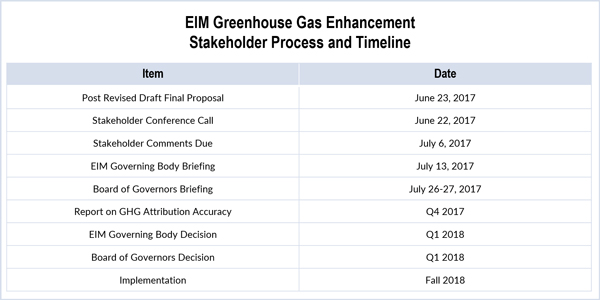By Jason Fordney
Western Energy Imbalance Market (EIM) participants are generally supportive of CAISO’s plan to account for greenhouse gas emissions of external resources but requested more information on market tools the grid operator plans to implement.
The EIM received about a dozen comments before the July 6 deadline in response to CAISO’s revised draft final proposal for the GHG accounting system.

CAISO must develop a GHG accounting system that enables the ISO market to track and price emissions from all participating resources (such as the Jim Bridger plant shown above) | Pacificorp
CAISO is working with the California Air Resources Board (CARB) to address concerns that the EIM market design is not capturing the climate effects from imports serving ISO load. EIM energy transfers that serve ISO load are subject to CARB regulations, and the air quality agency relies on the ISO’s market data to identify participating resources’ emissions.
CARB’s concern, according to CAISO, is that “the market optimization’s least cost dispatch can deem or attribute low emitting resources to the ISO, but not account for the resulting ‘secondary’ dispatch or backfill of other, possibly higher emitting resources to serve external demand.”
After consulting with market participants, CAISO proposed a “two-pass” market tool to determine which generation resources support EIM transfers serving ISO load. The first pass would determine the optimal schedule across the EIM footprint while not allowing net transfers into the ISO. The second pass would allow transfers into the ISO, limiting each EIM resource’s GHG bid quantity to the difference between the resource’s upper economic limit and the optimal schedule determined in the first pass, according to the ISO.
CAISO is initially planning to implement the two-pass solution only in the real-time market but said it could extend the approach to the day-ahead market.
A group of market participants — including Seattle City Light, Portland General Electric, Idaho Power, Arizona Public Service and PacifiCorp — requested more information on the impacts of the proposal.
The companies said they “believe it is critical to the success of the ISO’s proposal, and the EIM in general, that prices for electricity to serve load outside of California are not inappropriately impacted by this proposed change to the market optimization.”
The group added that it “is not able to assess, however, whether this principle will likely be met based on the current information provided.” The ISO did not provide much detail on price impacts inside or outside California from the two-pass approach, they said.
In separate comments, Seattle City Light said the two-pass proposal “will result in a more accurate accounting of GHG emissions attributable to California, while also preserving the resource-specific cost and GHG attribution components within the [market] optimization.”
The American Wind Energy Association’s California Caucus supported the two-pass solution, as did the “Six Cities” (Anaheim, Azusa, Banning, Colton, Pasadena and Riverside) in a joint filing. “The cities look forward to the outcome of the ISO’s simulations of the two-pass optimization methodology and may identify and comment on implementation concerns based on the simulation results,” they said.
EIM participant PacifiCorp, a non-California entity, was more cautious, saying it “needs additional information and analysis, and greater assurances from the ISO that least-cost dispatch will be preserved and that PacifiCorp’s customers outside of California will not be negatively impacted in an unwarranted way by this change driven by California’s environmental policies.”
The multistate utility said it is concerned that aspects of the proposal will disrupt the market. “Given the complexity of introducing a two-pass optimization, PacifiCorp is concerned that there will be additional unforeseen and unintended consequences associated with this approach,” it said.
CAISO said it will issue a report in the fourth quarter of this year based on simulations analyzing how effective the proposal would be in minimizing secondary dispatch.

The EIM Governing Body and CAISO Board of Governors are Due to Review New GHG Rules in Q1 2018 | CAISO
The EIM Governing Body is due to review the proposal at its meeting Thursday and make a decision in the first quarter of 2018. The CAISO Board of Governors is due to review it in the first quarter of 2018, with implementation expected around fall of next year.



